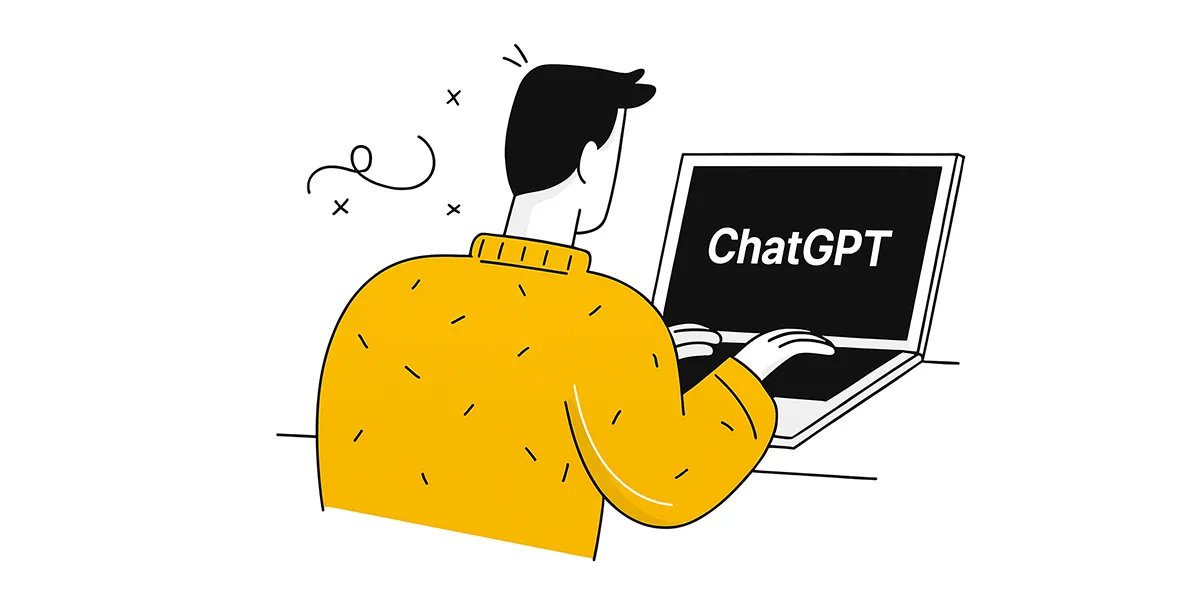5 ChatGPT Prompts That Help Founders Raise Funding Faster
Five targeted ChatGPT prompts to streamline your startup’s fundraising by crafting compelling pitch decks, emails, and investor messaging.

Why Use ChatGPT for Fundraising?
If you're drafting your first deck or sending your 30th cold email to investors, it often starts with a blank page and a blinking cursor. This is where ChatGPT for startups can have a huge impact.
Speed, Clarity, and Idea Generation
Startups move fast, and so should your fundraising process. Tools like ChatGPT give you a jumpstart by offering structure, phrasing, and frameworks in seconds.
Need help with your seed round messaging? Ask ChatGPT to summarize your traction or craft a compelling "Why Now?" slide. Trying to figure out how to write a pitch deck that doesn’t bore investors to death? It can outline one tailored to your industry and stage, fast.
What used to take hours now takes minutes.
No More Blank Page Syndrome
Founders know this moment well: you're staring at a Google Doc, trying to write your investor pitch, and nothing comes out. It’s not a creativity problem, it’s a clarity problem.
This is where startup fundraising prompts shine. With the right questions, ChatGPT can help you find the right angle for your story, clarify your business model, and even help you rewrite a confusing deck slide.
What ChatGPT Can and Can’t Do
Let’s be honest: ChatGPT isn’t going to raise your round for you magically. It won’t build your product, prove your traction, or replace the human connection investors need to say “yes.”
But it will help you:
- Write clearly and faster
- Structure a compelling narrative
- Prepare for tough questions
- Polish your pitch deck writing
- Run faster experiments with AI investor outreach
The real magic happens when you combine smart tools with smart thinking. Use ChatGPT prompts for fundraising to jumpstart your message. Then refine it using your unique insight, traction, and tone.
The 5 Fundraising Prompts (and How to Use Each One Right)
ChatGPT prompts for fundraising can be surprisingly effective when used effectively. Below are five prompts that help real founders craft more effective decks, refine their messaging, and approach investors with greater confidence.

✅ 1. “Write a 10-slide investor pitch deck outline for a [startup type] targeting [market]”
Prompt:
Write a 10-slide investor pitch deck outline for a [SaaS / marketplace / fintech / etc] startup targeting [SMBs in Europe / Gen Z travelers / HR teams in the US].
When to use it:
When you're starting your deck from scratch or want a quick sanity check on your current structure.
How to tweak it for your startup:
Be specific about your product, audience, and funding stage. For example:
"...for a B2B SaaS startup helping logistics teams in Europe optimize last-mile delivery."
💡 Bonus tip:
Add “...in the style of Airbnb” or “...similar to a seed-stage fintech deck” to get tone and slide style inspiration. This works well if you're modeling after known success stories.
✅ 2. “Write a cold email to a pre-seed investor interested in [industry]”
Prompt:
Write a short cold email to a pre-seed investor interested in [healthtech / creator tools / climate SaaS], introducing my startup and traction.
When to use it:
Perfect for early-stage investor outreach or warm introductions when you're unsure how to lead with value.
How to tweak it for your startup:
Include details like recent traction (“$10k MRR in 3 months”) or unique positioning (“YC alum building in climate tech for emerging markets”).
💡 Bonus tip:
Ask for versions in different tones:
“Can you write this in a friendly but confident tone?”
And always include a simple CTA (e.g., “Would love to share more if it’s a fit for your current thesis.”)
✅ 3. “What metrics should I include in a seed round pitch deck?”
Prompt:
What are the most important metrics I should include in a seed round pitch deck for a [startup type]?
When to use it:
When preparing for investor pitch preparation or deciding what to put on your traction or financial slides.
How to tweak it for your startup:
Add business model details like “B2C mobile app” or “enterprise SaaS” to get more tailored KPIs.
💡 Bonus tip:
After you get a list, ask:
“Which of these are must-haves for a startup with $15k MRR and 20% MoM growth?”
This helps you prioritize what really matters for your stage and vertical.
✅ 4. “Write a persuasive ‘Why Now?’ slide for a startup in [industry]”
Prompt:
Write a persuasive 'Why Now?' slide for a [AI HR tool / EV charging app / vertical SaaS for real estate].
When to use it:
When you're stuck explaining timing, it's one of the hardest parts of any deck.
How to tweak it for your startup:
Include context about trends you're riding (e.g., "Remote work is now standard across Europe") or problems that have become urgent.
💡 Bonus tip:
Ask ChatGPT to incorporate relevant macroeconomic or technology trends, like:
“Include data points about rising cloud adoption among SMBs in the U.S.”
This builds investor confidence that your timing advantage is real.
✅ 5. “Improve this investor FAQ based on objections a VC might have”
Prompt:
Here are some common questions investors ask. Please rewrite my answers to be more compelling and address potential VC objections.
[Paste your FAQ or sample Q&A here]
When to use it:
Right before investor calls or when refining your email replies to tough questions.
How to tweak it for your startup:
Mention any real objections you’ve faced before (e.g., market size, business model doubts) so ChatGPT can strengthen those answers specifically.
💡 Bonus tip:
Ask:
“Write the answer in the tone of a calm but confident founder.”
Or:
“Give me the counter-argument to this common objection: [insert objection]”
This makes your answers sharper and more investor-ready.
Pro Tips to Get Better Outputs from ChatGPT
Using ChatGPT for fundraising isn’t just about asking a single prompt and copy-pasting the result. To get real value, you have to treat it like a tool that sharpens your thinking, not replaces it. Here are three field-tested tips to help you get the most out of your prompts.

1. Be Specific with Stage, Sector, and Traction
Generic prompts lead to generic answers. If you want usable content, whether it’s a cold email, a “Why Now?” slide, or a deck outline, feed ChatGPT the kind of details a real investor would care about:
- Stage: Pre-seed, seed, Series A, each requires a different tone and depth of traction.
- Sector: SaaS, climate tech, marketplaces, consumer apps, different industries speak different languages.
- Traction: Be honest and specific. Mention active users, revenue, pilots, waitlists, or even “we just launched last week.”
📌 Example:
Instead of:
“Write a pitch deck for my startup.”
Try:
“Write a pitch deck outline for a pre-seed vertical SaaS startup serving real estate agents in Germany. We just signed our first 5 paying customers and are looking to raise €500K.”
The more context you give, the more useful the output. This is what separates generic AI tools for startups from those that actually save you time.
2. Use Follow-Up Prompts to Refine the Result
Think of ChatGPT as a conversation, not a vending machine. The first output is rarely perfect, and that’s okay. Some of the most useful startup fundraising tips come from tweaking and pushing the AI a bit further.
Use prompts like:
- “Make this more concise for a VC with a short attention span”
- “Add urgency to this cold email subject line.”
- “Can you rewrite this to highlight our competitive advantage more clearly?”
This back-and-forth is how you move from rough draft to investor-ready copy. It’s also how you build a sharper story over time.
3. Test Multiple Variations Before Sending to Real Investors
Founders often assume there’s one perfect way to explain their startup. In reality, investors respond to different things: market size, founder story, traction, timing, or team. That’s why it’s smart to test multiple angles using ChatGPT.
Ask for:
- 3 different cold email drafts
- 2 ways to frame your “Why Now?”
- Variations of your company's one-liner or tagline
Then A/B test them in real conversations or pitch meetings. Use feedback to improve the next round. This turns ChatGPT into one of your most efficient founder tools for funding.
Don’t Just Use AI, Use It Like a Pro
The truth is, AI tools for startups are only as effective as the way you use them. The five ChatGPT prompts for fundraising you just explored work because they focus on what actually matters to investors: clear messaging, strong positioning, relevant traction, and well-structured communication.
Pitch smarter, not harder.
Evalyze helps you improve your deck and matches you with the right investors fast.
More Articles
Crafting Seed to Series A Pitch Deck: A Slide-by-Slide Guide
The template we’re analyzing today is free, customizable Canva pitch deck provides a solid foundation for startups in tech-driven sectors
February 10, 2025
Fundraising 101: How to Raise Your First Round
Securing initial funding in the uncertain landscape is a challenge for startups.
February 27, 2025